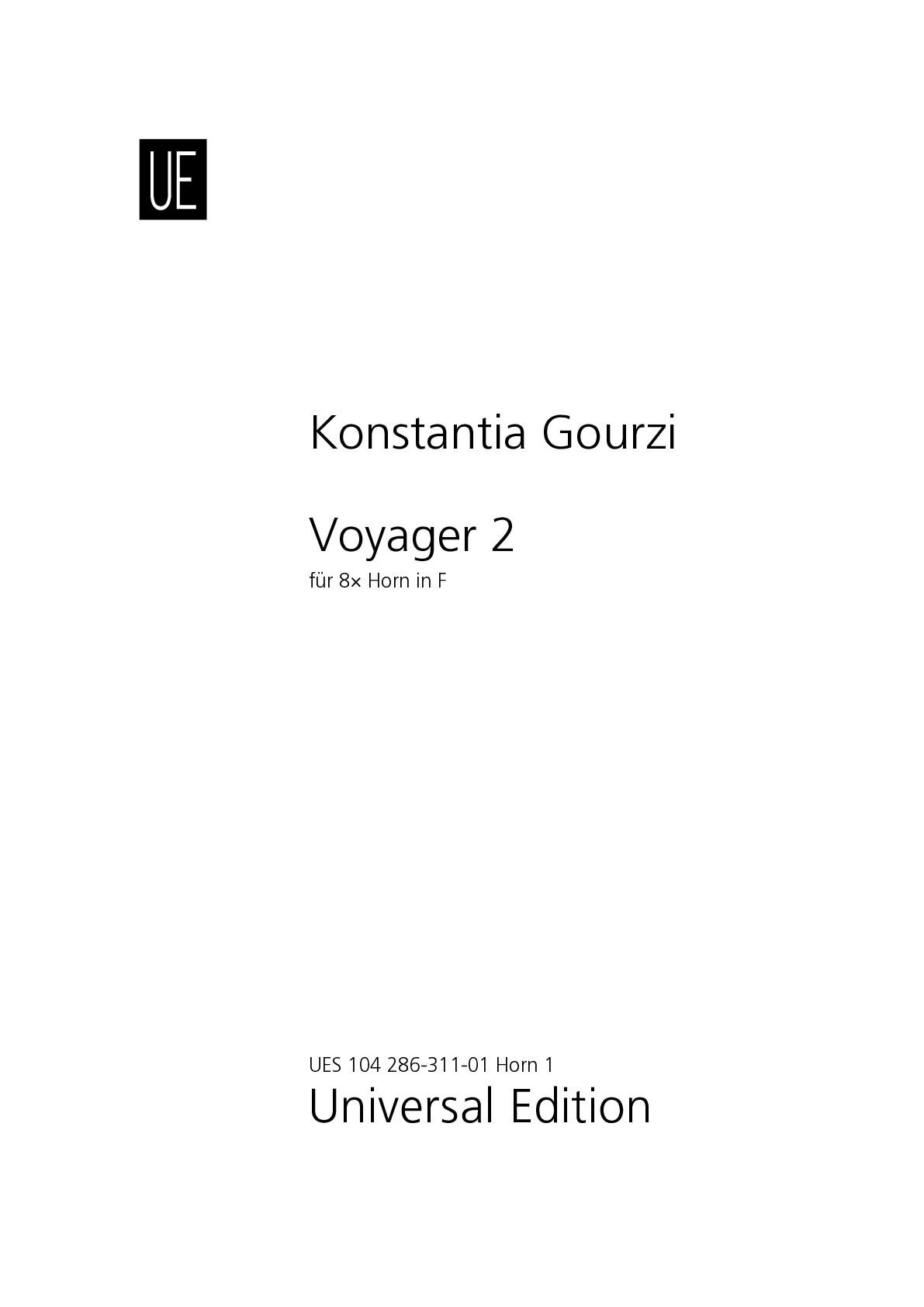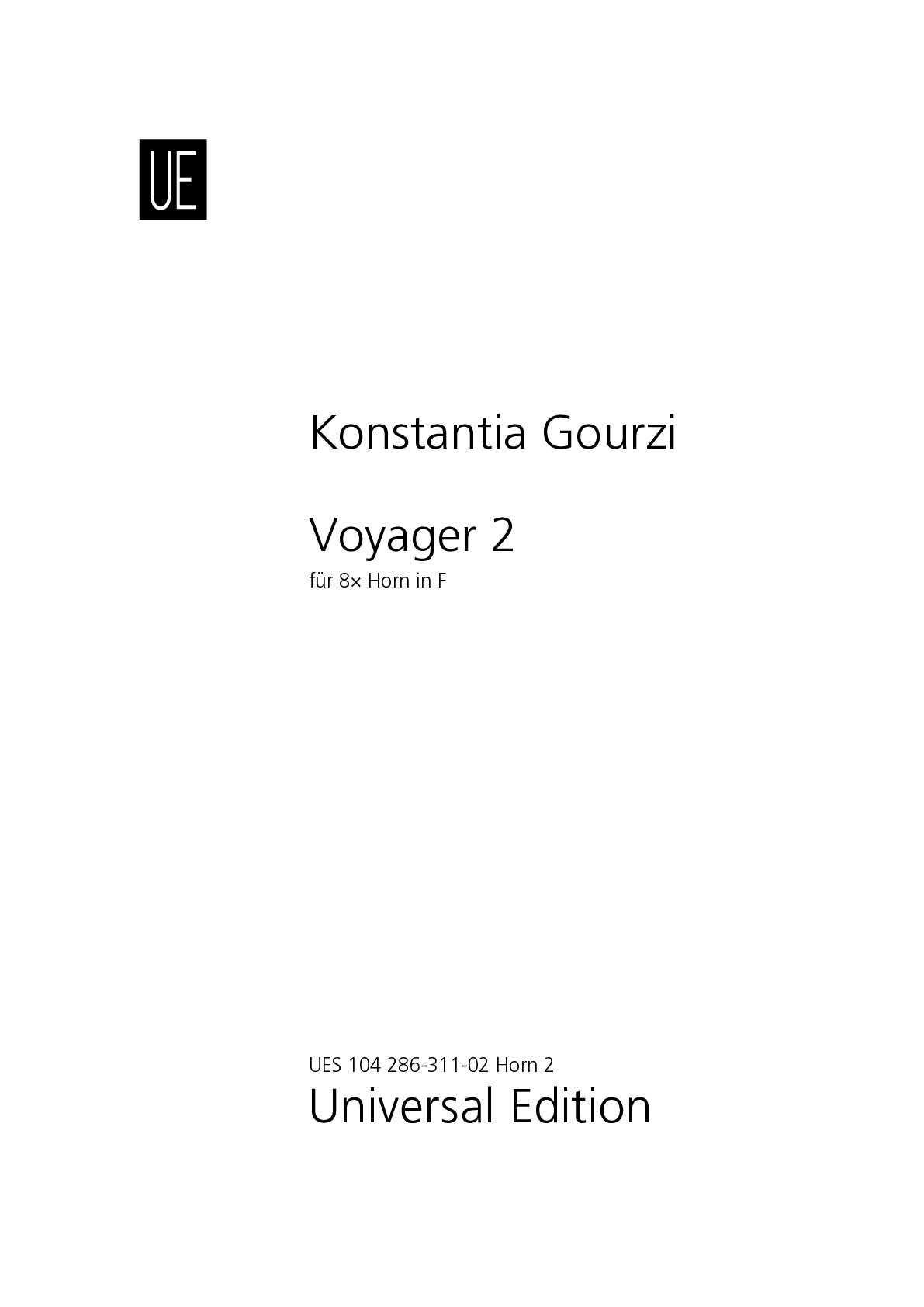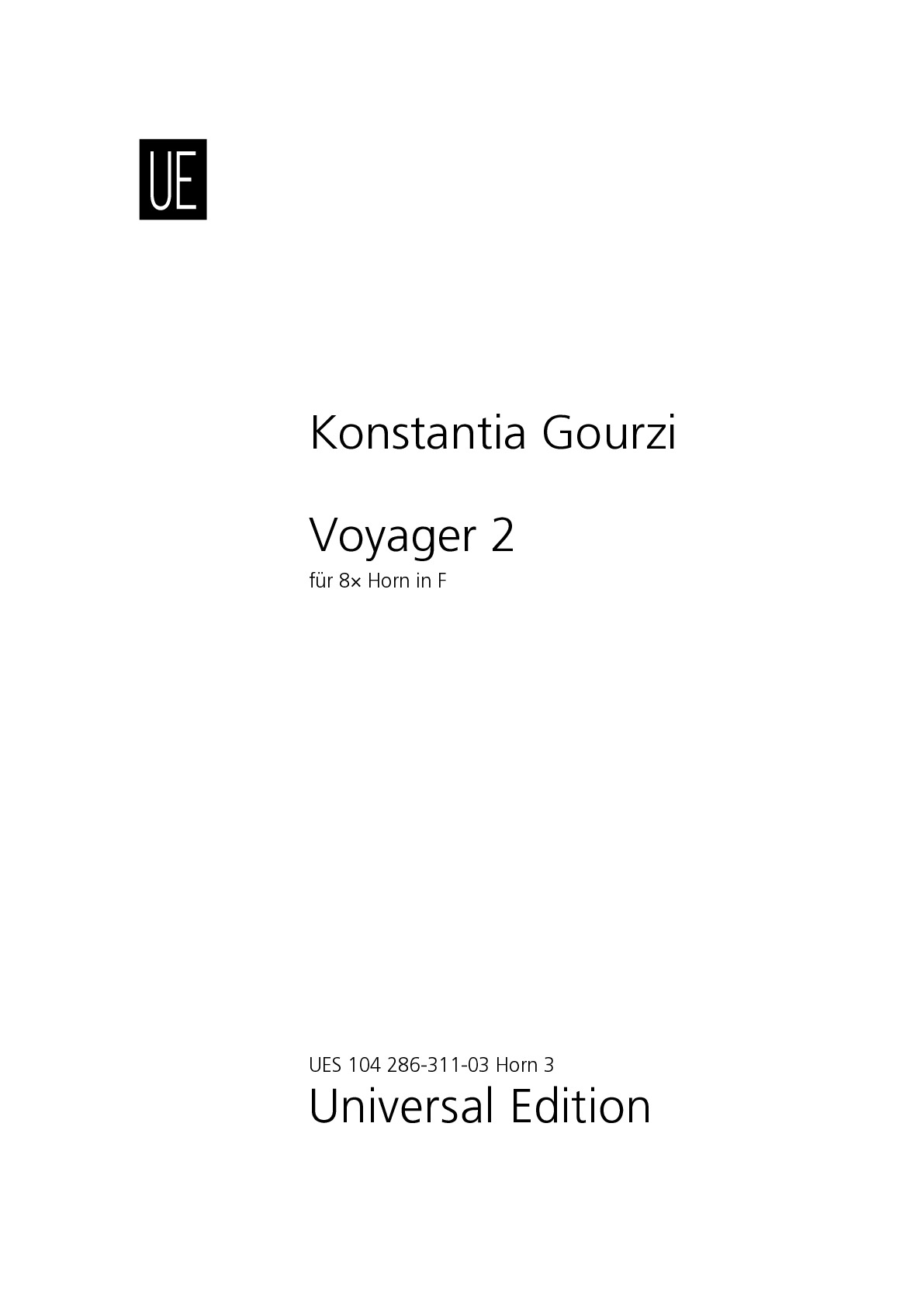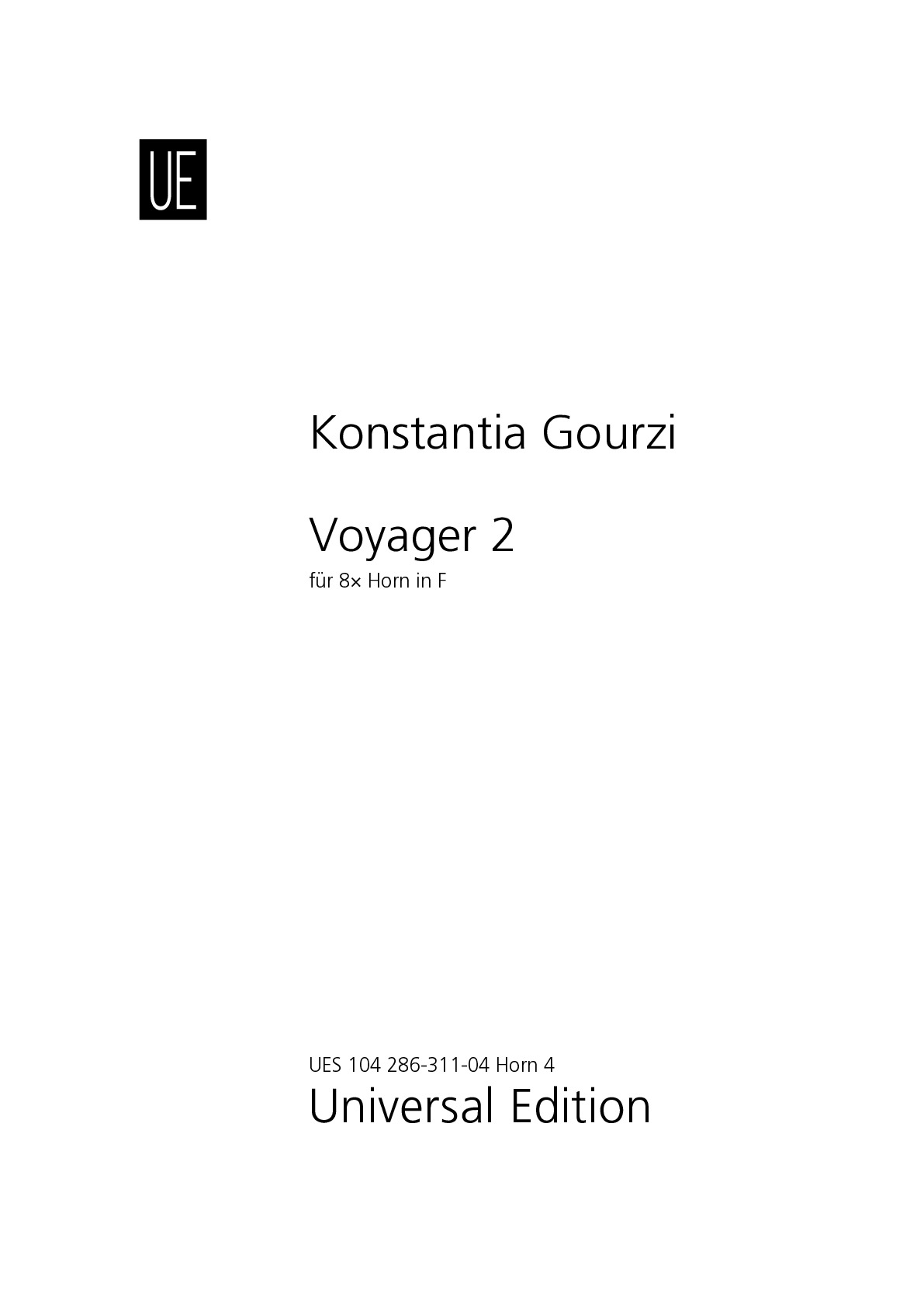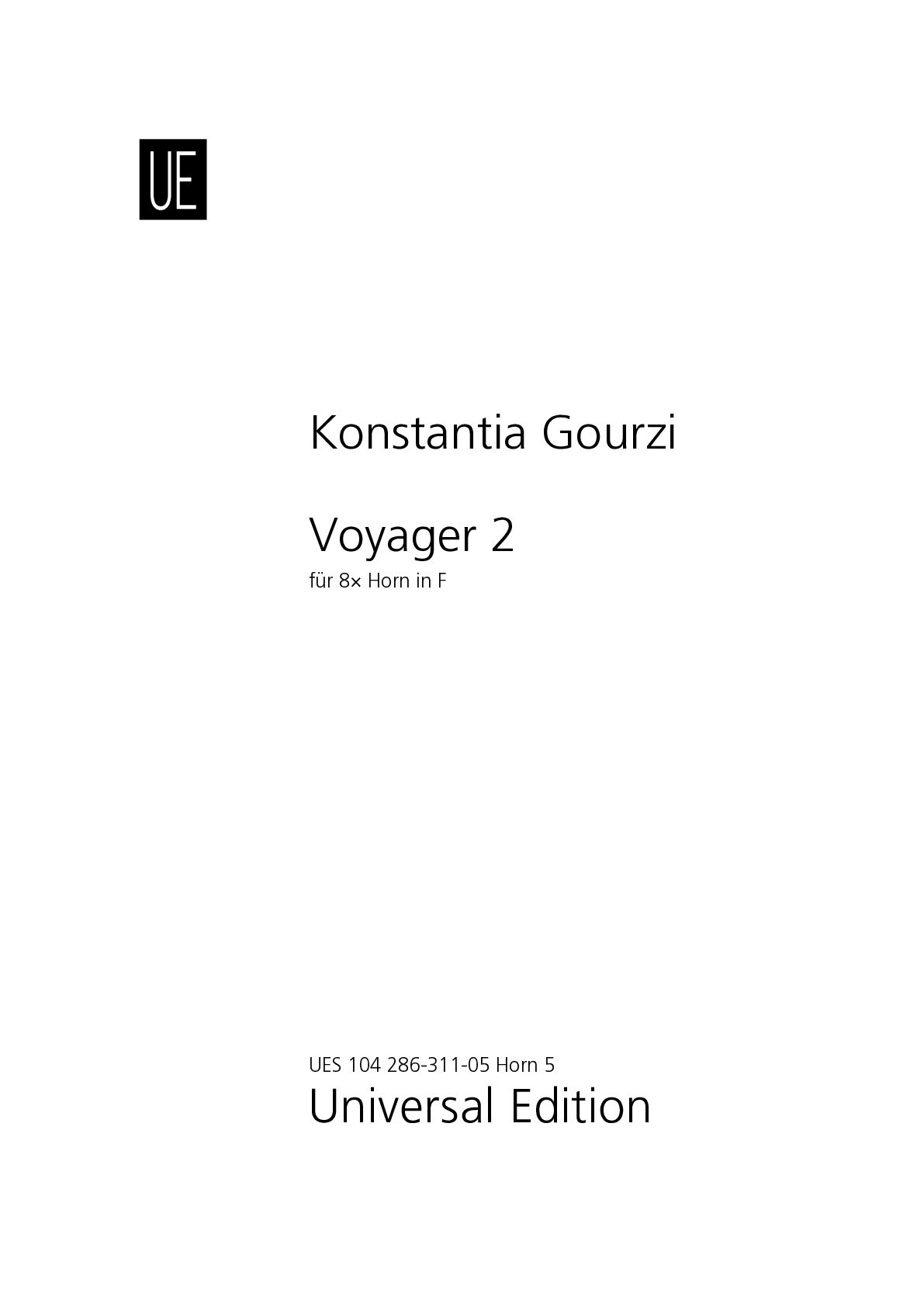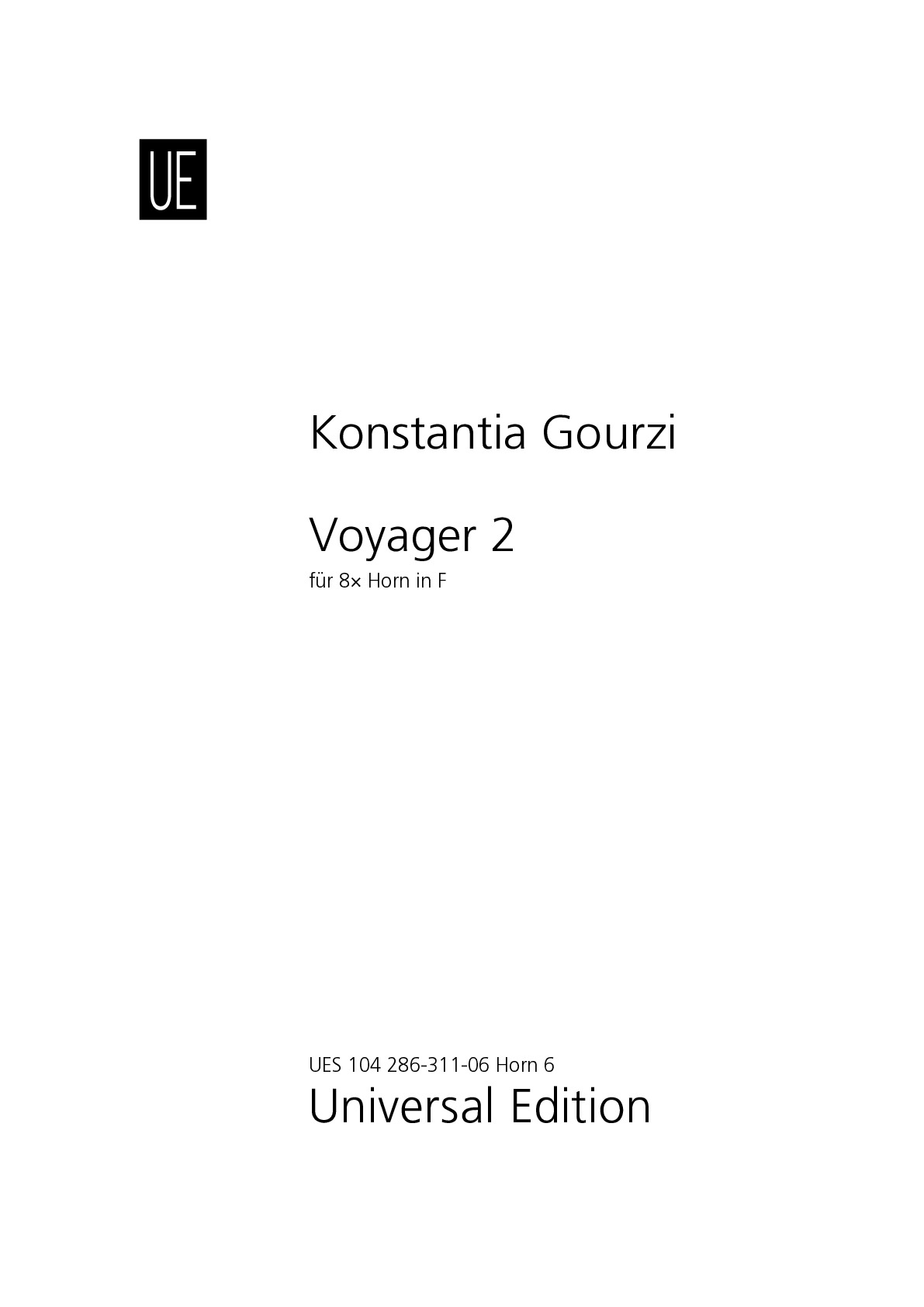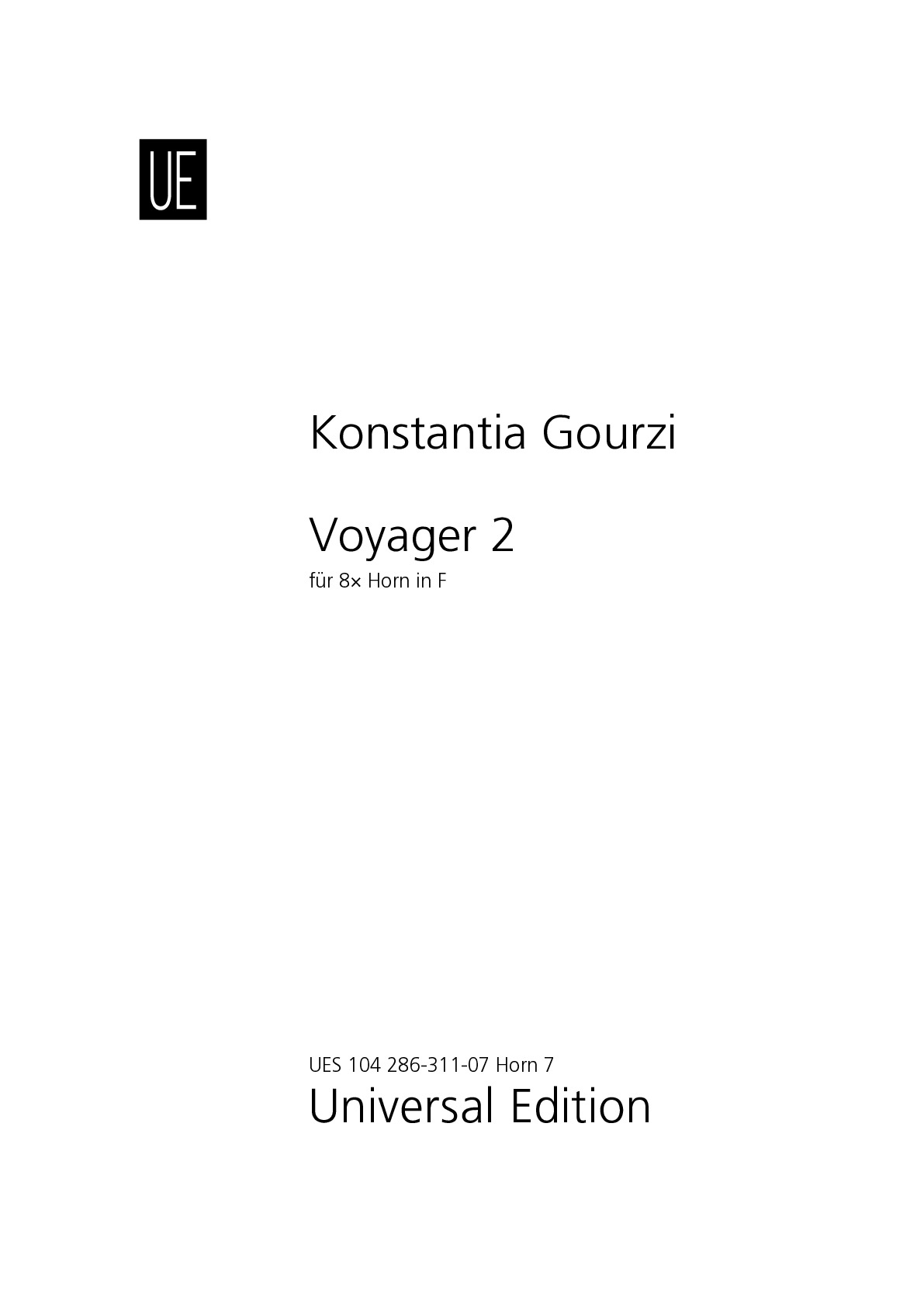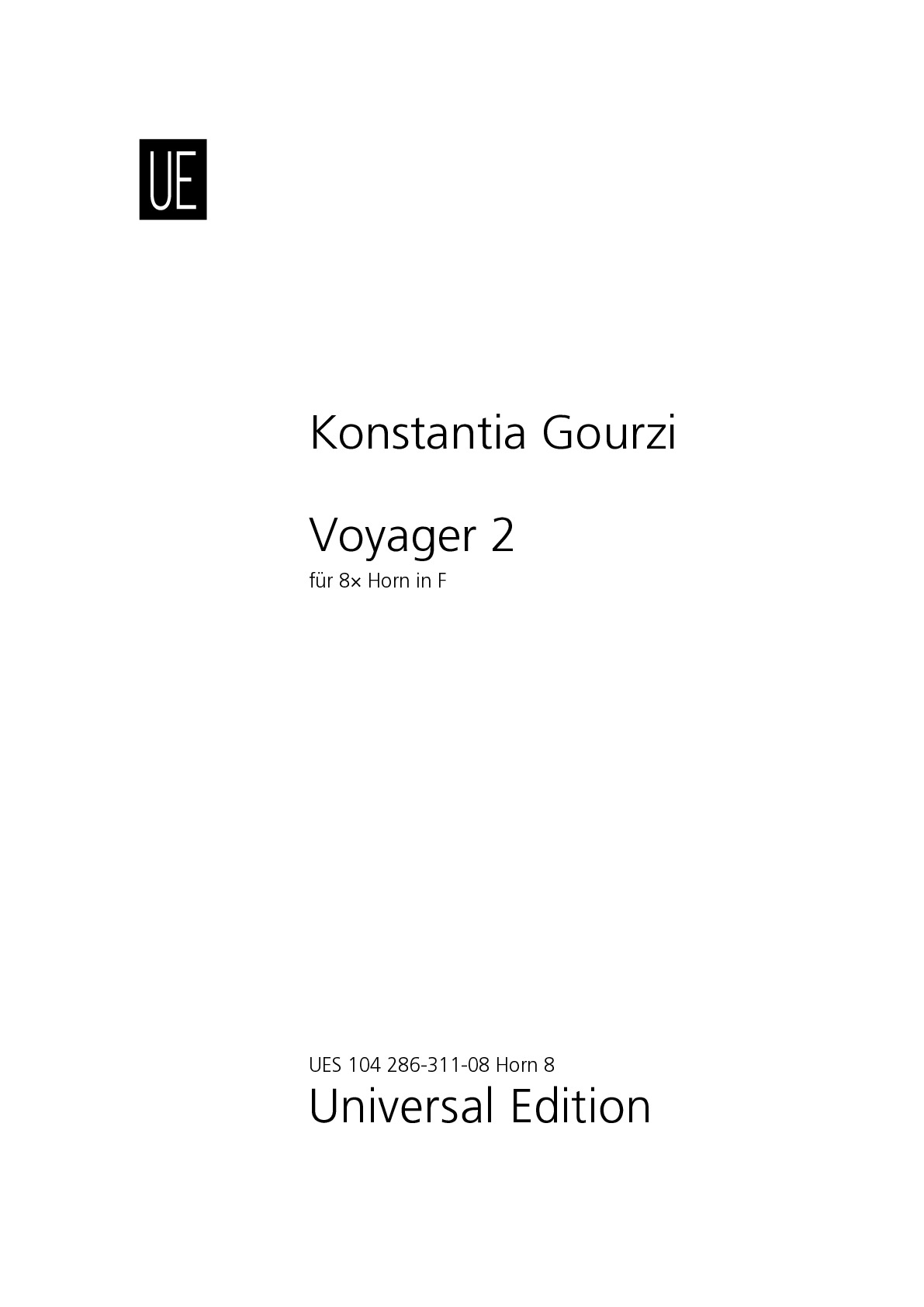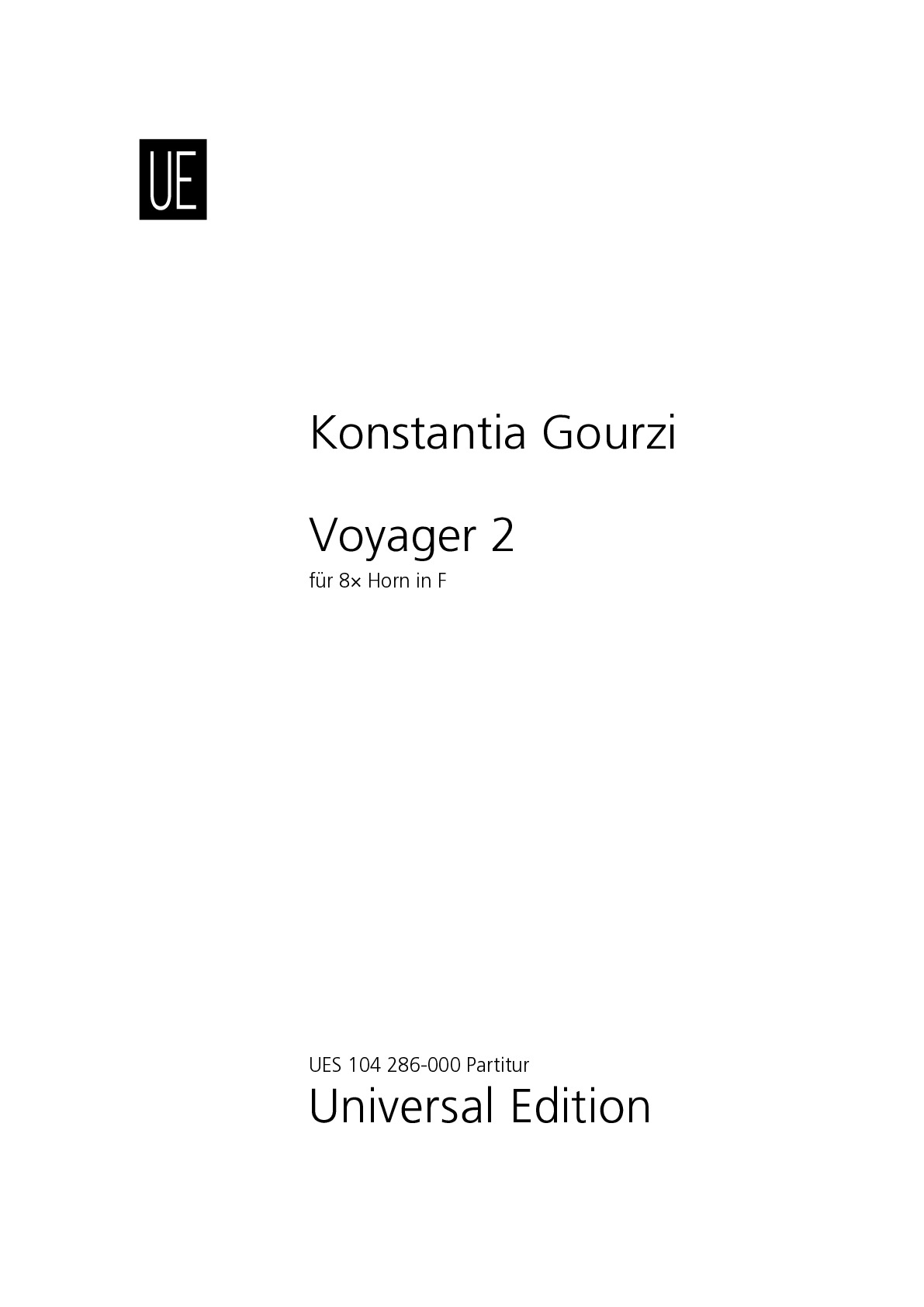

Konstantia Gourzi
Voyager 2
Duration: 12'
Instrumentation details:
1st horn in F
2nd horn in F
3rd horn in F
4th horn in F
5th horn in F
6th horn in F
7th horn in F
8th horn in F
Voyager 2
Sample pages
Video
Work introduction
Voyager 2 is a commission from, and dedicated to, the Bavarian State Opera’s Munich Opera Horns. The composition's inspiration is the Voyager 2 space probe, which was launched from Earth in August 1977. Its initial task was to send photographs of planets and their moons to Earth for a few months. As if by a scientific miracle, the probe continues to fly in interstellar space nearly 45 years after its launch. It is still in contact with Earth, continues to send photos, and signals are exchanged. All this is despite the fact, that after just under a year of flight, contact got cut off, and could only be restored by a spectacular, scientifically masterful repair from a distance of hundreds of thousands of kilometers.
The existence of a human work in the most distant parts of our solar system fascinated me. I wanted to find a dramaturgical concept to develop this fascination compositionally. Does, after all, “something” remain: following its own trajectory, without being permanently controlled by man? Are there similar phenomena or processes in music or in the psyche? Would there be something that could remain in our psyche or heart unexpectedly - like the extra-long voyage of Voyager 2 - from the music of the 21st century?
Composing for 8 horns was a new task for me, one that I had long felt was not easy, since I had few sonic associations with this instrumentation. However, the more I delved into Voyager 2’s story and journey, the more accessible the instrumentation became.
Both the dramaturgy and the rhythmic and harmonic material were then structured by a number chart that I developed. The piece is composed in seven interconnected parts that are played as one. The first three parts are conceived as a first movement, the fourth, fifth and sixth parts as a second movement, and the seventh part (coda) as the third movement.
The first movement, the first three parts, serve as sound stations in a journey, in preparation for what is to come. In the second movement (part 4), all 8 horns speak into the instrument, as if asking a surprising question and to transition to the fifth part. Here, all 8 horns play together in a circle as a Call and Response in duets or quartets: one duet plays an ostinato tapestry of sounds while the other six players share the harmonies, melodies and rhythm. This ritual is repeated four times so that each player assumes each musical function. The mood of a ritual that this creates requires intense musical concentration. The sixth part is again spoken into the instrument, this time as an answer to the previously asked question - in confirmation, so to speak. The third movement (part 7) is a coda with the chords of the chorus, which continues to sound as if in lontano form. It moves away, in liveliness.

